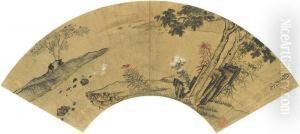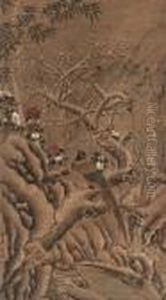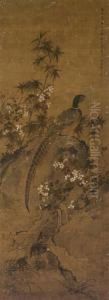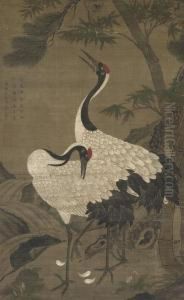Zhou Zhimian Paintings
Zhou Zhimian was a notable figure in the world of Chinese art, born in 1535 and passing away in 1611. He lived during the Ming dynasty, a period that is celebrated for its contributions to Chinese literature, philosophy, and the arts, including painting, calligraphy, and pottery. Zhou Zhimian, in particular, gained recognition for his landscape paintings, which are characterized by their meticulous detail, serene beauty, and profound sense of harmony. His works are considered exemplary of the literati painting style, which was favored by the scholar-officials of the time. This style emphasized personal expression, scholarly learning, and an intimate connection with nature, as opposed to the more formal and technically precise court and religious art.
Zhou Zhimian's art reflects the deep intellectual and cultural currents of his era. He was not just a painter but also a scholar, embodying the ideal of the cultured literati who were as skilled with the brush as they were with the pen. His landscapes often feature mountains, rivers, and forests, rendered with soft brushwork and a subtle palette that invites contemplation. These works were more than just aesthetic creations; they were imbued with philosophical and poetic meanings, serving as visual metaphors for the moral and intellectual virtues admired by the literati class.
Despite his achievements, Zhou Zhimian's life and work were also reflective of the broader challenges and changes facing the Ming dynasty. The period was marked by social, economic, and political upheavals, and the arts served as a means for scholars and officials to retreat from public life into a world of personal and artistic cultivation. Through his paintings, Zhou Zhimian not only sought to capture the transient beauty of the natural world but also to comment on the human condition, offering a refuge from the turmoil of his times.
Today, Zhou Zhimian's paintings are highly valued for their historical significance and artistic merit. They are held in the collections of major museums around the world, where they continue to be studied and admired for their beauty and depth. His legacy lives on as a testament to the rich cultural heritage of the Ming dynasty and the enduring appeal of Chinese landscape painting.







